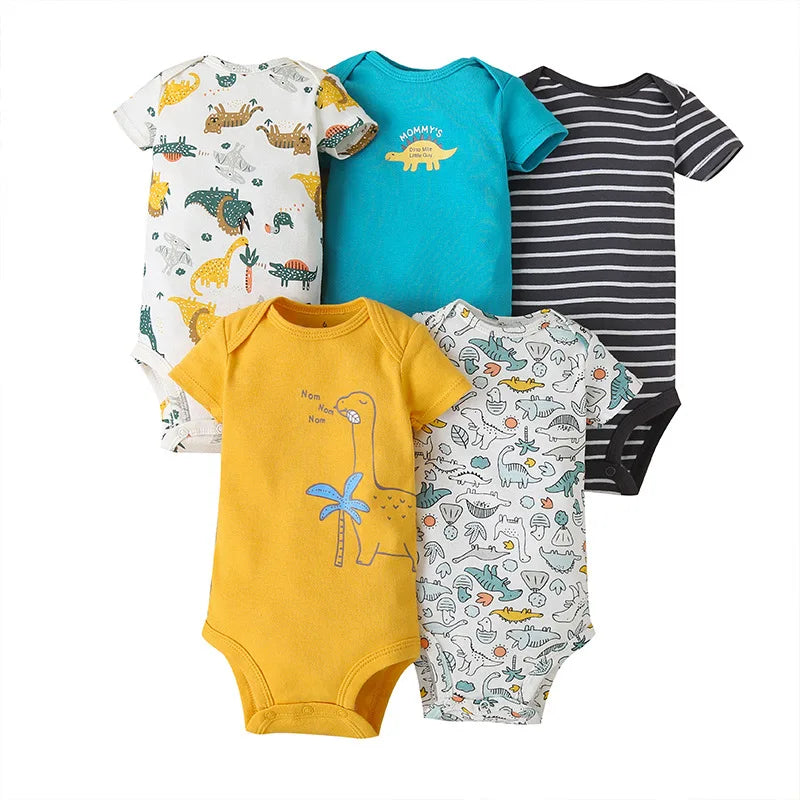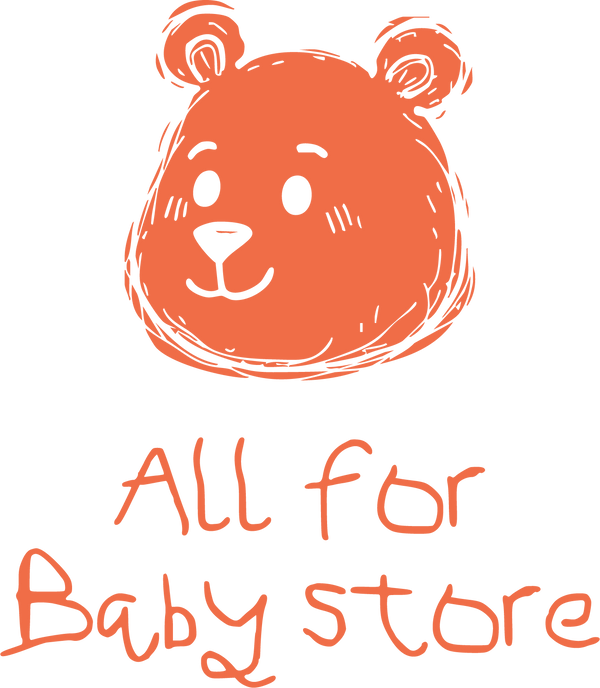
Baby Carrier Wrap: Your Complete Guide to Safe, Comfortable Babywearing
Share
Keeping your little one close while keeping your hands free sounds like a dream, right? That's exactly what a baby carrier wrap offers. Whether you're tackling household chores, running errands, or simply soothing a fussy baby, a wrap-style carrier gives you the flexibility to move freely while your baby stays snug and secure against your chest.
What Makes a Baby Carrier Wrap Special?
A Kangaroo Style Baby Carrier wrap is a long piece of fabric typically made from soft, stretchy cotton or sturdy woven material that you wrap around your body to create a secure pocket for your baby. Unlike structured carriers with buckles and straps, wraps mold to both your body and your baby's, creating a custom fit every single time.

The beauty of using a Comfortable Baby Carrier Wrap – Front & Back Carry 0–24M lies in its versatility. You can adjust the tightness, change carrying positions, and even use the same wrap from newborn days through toddlerhood. Many parents love that wraps distribute baby's weight evenly across your shoulders, back, and hips, making them comfortable for extended wear.

Types of Baby Carrier Wraps You Should Know
Stretchy Wraps
Stretchy wraps are perfect for newborns and younger babies. Made from cotton blended with spandex or lycra, these wraps are forgiving and gentle on tiny bodies. They're easier to learn because the stretchy fabric accommodates small adjustments. However, as your baby grows heavier (usually around 15-20 pounds), you might notice the fabric starts to sag, which is when many parents switch to a woven option.
Woven Wraps
Woven wraps offer more support and structure without any stretch. They're made from sturdy, densely woven fabric that can hold heavier babies and toddlers comfortably. While there's a learning curve to mastering the various tie techniques, woven wraps provide excellent support for longer wearing sessions and growing children.
Ring Slings
Though technically not a wrap, ring slings deserve mention. These single-shoulder carriers use two rings to adjust and secure the fabric. They're quick to put on and perfect for short trips, though the one-shoulder design can become uncomfortable during extended use.
The Amazing Benefits of Using a Baby Carrier Wrap
Bonding and Emotional Development
Carrying your baby close promotes incredible bonding. Your heartbeat, warmth, and movement soothe your little one while strengthening your emotional connection. Studies show that babies who are worn regularly tend to cry less and feel more secure.
Hands-Free Convenience
Imagine folding laundry, preparing nutritious meals with proper baby food storage containers, or even enjoying a walk without wrestling with a bulky stroller. A baby carrier wrap gives you that freedom while keeping your baby content and close.
Better Sleep for Baby
The gentle motion of your movements, combined with your body warmth and familiar scent, creates the perfect environment for baby naps. Many parents find their babies fall asleep faster and stay asleep longer in a wrap compared to other sleep locations.
Physical Development Support
When positioned correctly, a baby carrier wrap supports healthy hip development by keeping your baby's legs in the optimal "M-position" or frog-leg position. This natural spread-squat position, where knees are higher than the bottom, reduces the risk of hip dysplasia.
Safety First: The T.I.C.K.S. Guidelines Every Parent Must Know
Safe babywearing isn't complicated, but it does require attention to important details. The UK Sling Consortium developed the T.I.C.K.S. checklist, which safety organizations worldwide recommend:
T - Tight: Your baby carrier wrap should be snug with no loose, saggy fabric. Your baby should be held close and high on your chest with proper support.
I - In View at All Times: You should always see your baby's face when you look down. Never let fabric cover their face or obstruct your view.
C - Close Enough to Kiss: Your baby should be positioned high enough that you can easily lower your head and kiss the top of their head.
K - Keep Chin Off Chest: This is critical. Your baby's chin must stay off their chest to keep airways open. There should be at least one finger's width of space under their chin.
S - Supported Back: The wrap should support your baby's back in a natural, slightly rounded position. Their chest and tummy should rest against you, and you should support their head and back with your hand when bending forward.
How to Choose the Right Baby Carrier Wrap
Consider Your Baby's Age and Size
For newborns, stretchy wraps work beautifully because they're soft and gentle. Once your baby reaches about 15-20 pounds, consider transitioning to a woven wrap for better support. Always check the manufacturer's weight limits most wraps accommodate babies from 8 pounds up to 35 pounds or more.
Think About Your Lifestyle
Do you need something quick for short trips? A ring sling might work better. Planning to wear your baby for hours while traveling with your toddler stroller? A woven wrap provides superior comfort and support.
Fabric Matters
Look for breathable, high-quality fabrics that won't irritate your baby's sensitive skin. Natural fibers like cotton work well, though some parents prefer cotton-linen blends for breathability in warmer weather.
Don't Skip Safety Standards
Choose baby carrier wraps from reputable manufacturers that meet safety standards. The International Hip Dysplasia Institute maintains a list of "hip-healthy" carriers, which can guide your selection.
Mastering Your Baby Carrier Wrap: Tips for Success
Start with Practice
Before placing your baby in the wrap, practice with a stuffed animal or doll. This helps you get comfortable with the wrapping technique without worrying about handling your baby simultaneously.
Get Help Initially
Having another adult present for your first few attempts makes the process less stressful. They can help position the fabric and ensure everything looks correct before you place baby inside.
Watch Video Tutorials
Most wrap manufacturers provide detailed video instructions on their websites. Watch these several times and follow along step-by-step. Consider attending a babywearing class or consulting with a certified babywearing educator.
Check Position Frequently
Especially during the first few months, check your baby's position every 5-10 minutes. Ensure their face is visible, chin is up, and they're breathing comfortably. Just like you'd regularly check on them during teething with a safe teething ring, monitoring position becomes second nature.
Common Baby Carrier Wrap Mistakes to Avoid
Making It Too Loose
A loose wrap doesn't provide adequate support and can allow your baby to slump into an unsafe position. The fabric should be snug enough that you could take your hands away (though you should always keep one hand supporting your baby, especially with newborns).
Covering Baby's Face
Never let fabric cover your baby's nose and mouth. Their face should always be visible and clear for breathing.
Ignoring Age and Weight Guidelines
Using a wrap beyond its recommended weight limit compromises safety. Similarly, wrapping a newborn in a position meant for older babies can be dangerous.
Wearing Baby Facing Out Too Early
While forward-facing might seem fun, it's not recommended for extended periods, especially for young babies. The inward-facing position better supports their spine and hips while preventing overstimulation.
Caring for Your Baby Carrier Wrap
Regular Washing
Wash your wrap according to manufacturer instructions—usually every one to two weeks, or more frequently if needed. Most cotton wraps are machine washable, making maintenance easy.
Inspect for Wear
Before each use, check for tears, worn seams, or weakened fabric. Just as you'd ensure baby bowls are safe and clean, your wrap deserves regular safety checks.
Proper Storage
Store your clean, dry wrap in a cool, dry place away from direct sunlight, which can weaken fabric fibers over time.
When to Stop Using a Baby Carrier Wrap
Most babies can be worn in a wrap until they reach 35-45 pounds, depending on the wrap type and your comfort level. However, many toddlers naturally transition away from being carried as they become more independent and want to explore on their own.
Signs it might be time to reduce wrap usage include your child constantly wiggling to get down, the wrap feeling uncomfortable despite proper positioning, or your child exceeding the manufacturer's weight limit.
Real Parent Experiences with Baby Carrier Wraps
Parents consistently report that using a baby carrier wrap transformed their daily routines. From calming colicky babies to managing multiple children, wraps provide practical solutions to real parenting challenges. Many describe the emotional benefit of constant closeness, noting how secure and content their babies seem when worn.
The convenience factor cannot be overstated. Navigating crowded spaces, hiking on trails where strollers can't go, or simply keeping your baby happy while you prepare dinner—these everyday scenarios become manageable with a quality wrap.
Making the Most of Your Babywearing Journey
Starting your babywearing journey with a baby carrier wrap opens up a world of closeness, convenience, and comfort. Whether you choose a stretchy wrap for your newborn or a woven wrap for extended wearing, remember that practice makes perfect. Don't get discouraged if the first few attempts feel awkward every parent experiences that learning curve.
The key is prioritizing safety, choosing quality products, and trusting your instincts. Your baby will let you know when they're comfortable, and you'll quickly learn to read their cues. Before long, wrapping your baby will become as natural as caring for their oral health with a gentle silicone toothbrush.
Ready to discover the perfect baby carrier wrap for your family? Explore expert parenting tips, safety guides, and trusted baby essentials at AllForBabyStore your go-to destination for happy, healthy parenting. Shop our carefully curated collection and find everything you need to make Baby Wearing safe, comfortable, and joyful.

